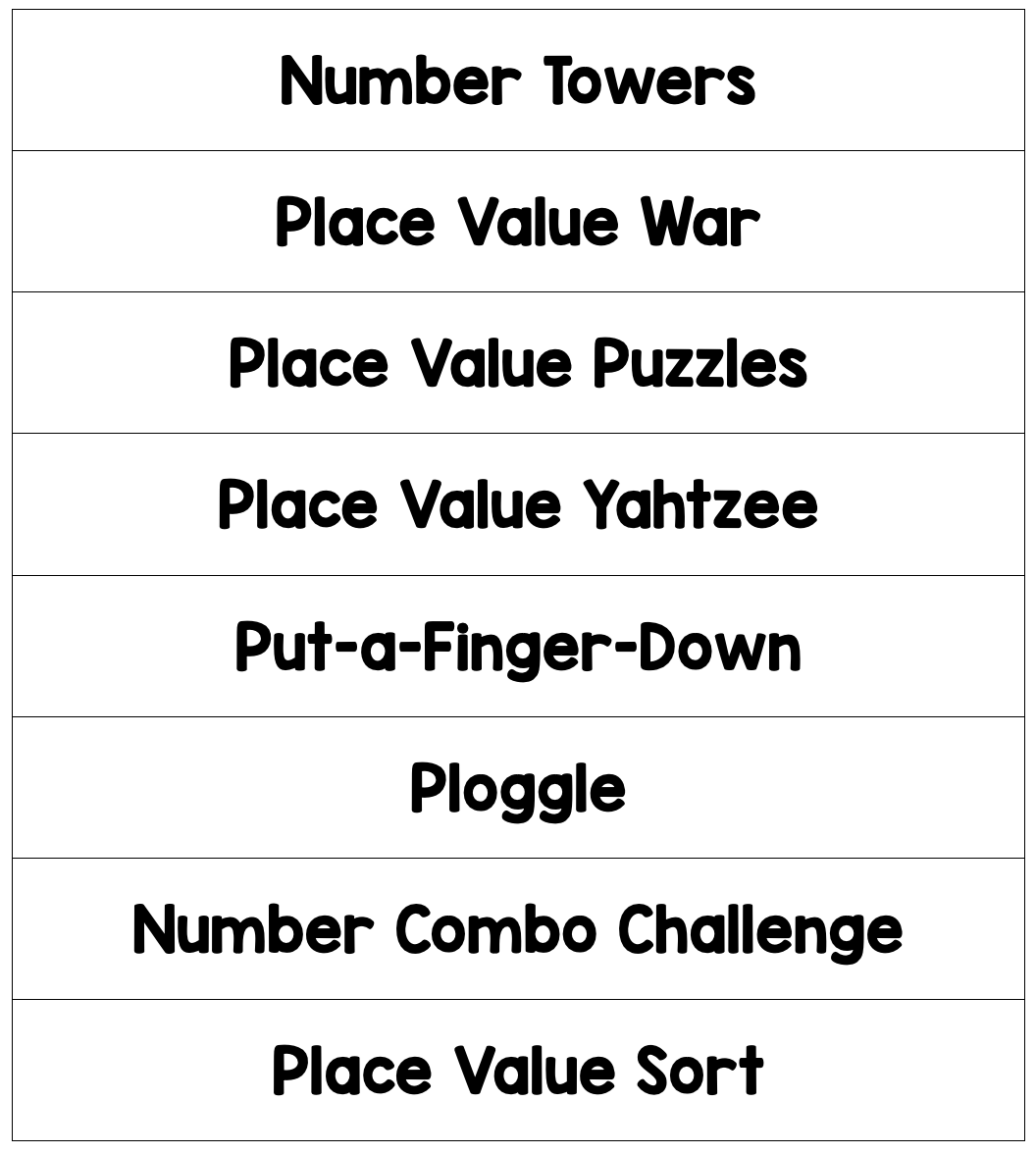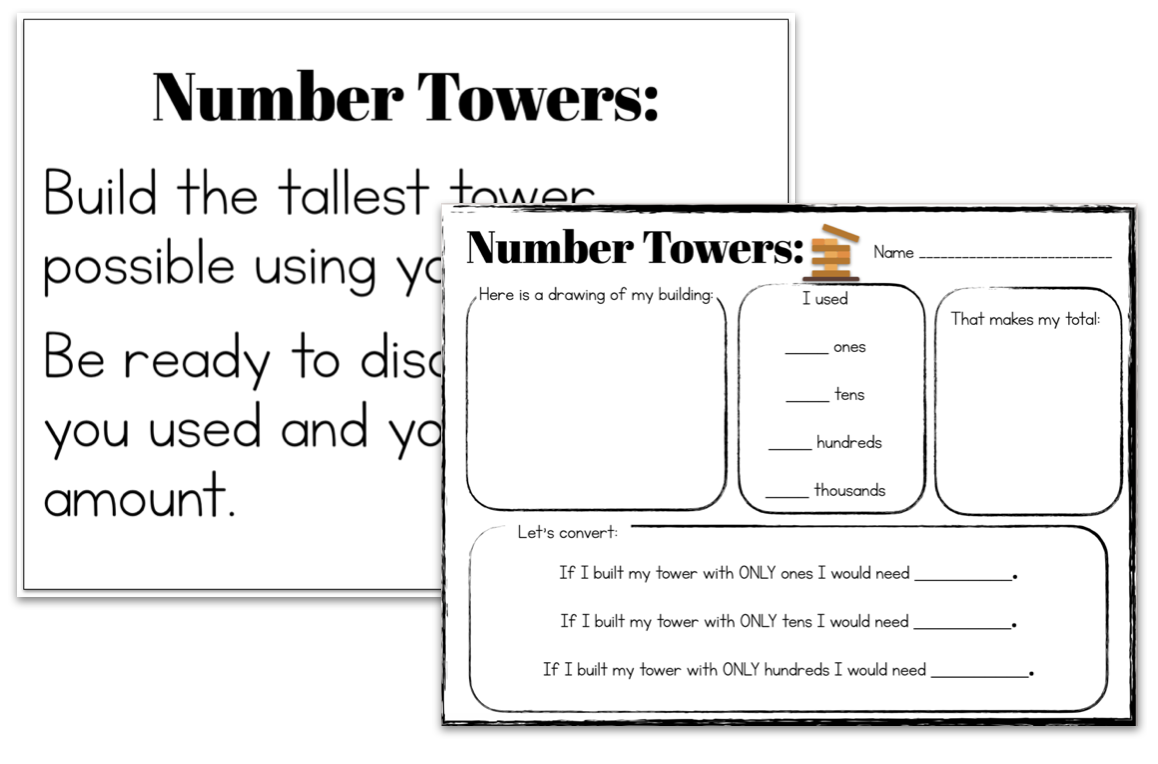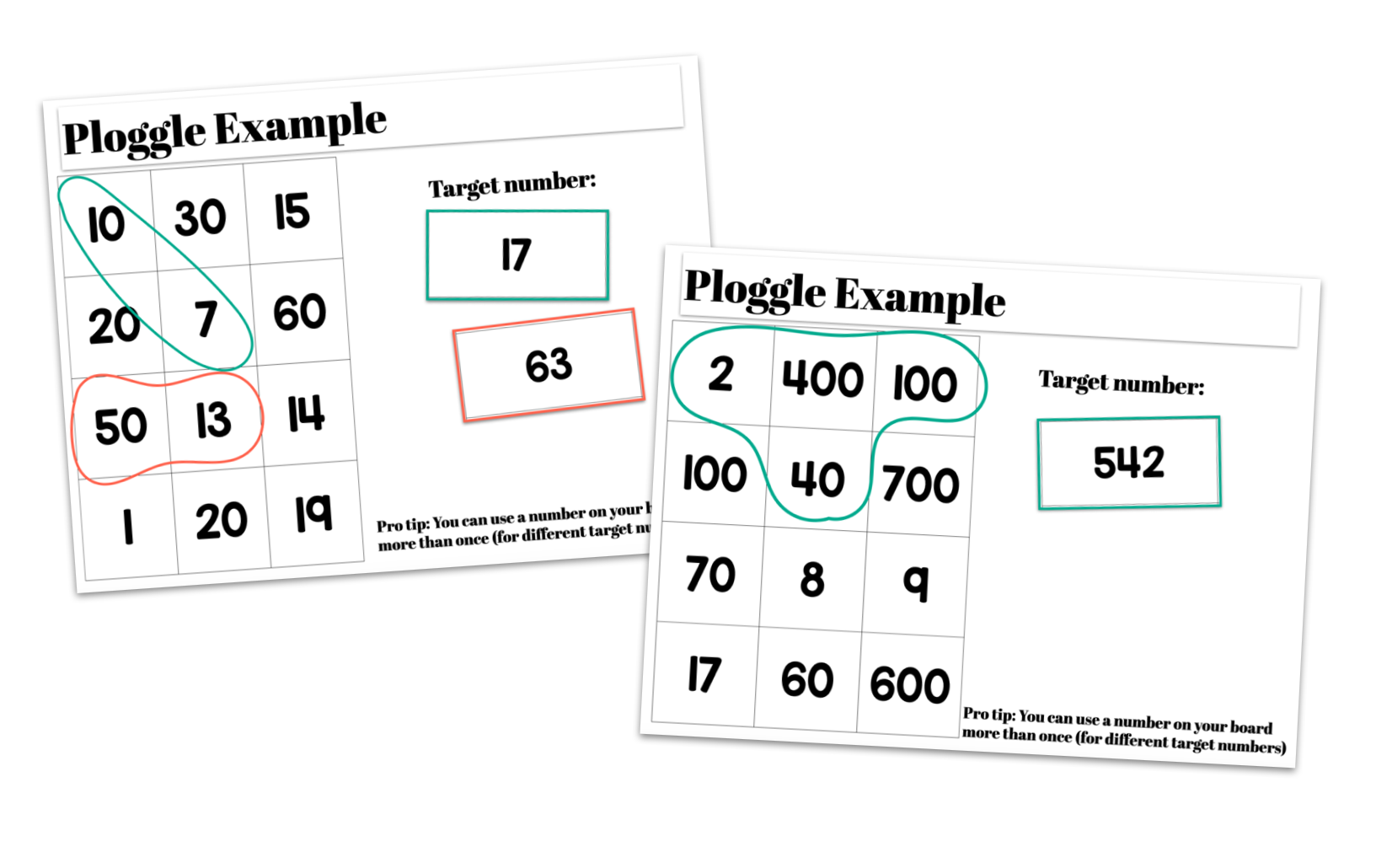8 FLEXIBLE Place Value Games/ Activities
Understanding place value is a big deal in math, but it's not just about filling in the right numbers in each spot. We want to take it a step further and help students become flexible thinkers when it comes to place value. That means focusing on the value of numbers and finding different ways to break them down. To truly grasp the concept of place value and foster deeper mathematical thinking, we need to encourage students to go beyond surface-level understanding and develop flexibility in their approach. By focusing on value and exploring different ways of breaking down numbers, we can empower students to think critically, problem-solve, and apply their knowledge in a variety of mathematical contexts.
Flexibility with place value is crucial because it allows students to develop a deeper understanding of numbers and their relationships. When students can look beyond the specific digit in each place and instead focus on the value it represents, they gain a more holistic view of numbers. This flexibility enables them to break down numbers in multiple ways, making connections and recognizing patterns that support problem-solving and critical thinking. By honing their ability to think flexibly about place value, students build a strong foundation for future math concepts such as addition, subtraction, multiplication, division, and more complex numerical operations.
A flexible approach to place value prepares students for real-world applications of mathematics. In everyday situations, numbers rarely come neatly packaged in standard place value forms. For instance, prices, measurements, or quantities may require students to adapt and manipulate numbers to make sense of them. By developing flexible place value skills, students become equipped to handle such real-life scenarios, making meaningful connections between abstract mathematical concepts and practical situations.
Additionally, flexible place value thinking enhances students' problem-solving abilities. When faced with mathematical challenges, students who can break down numbers flexibly are better equipped to analyze problems from different angles, explore various solution strategies, and determine the most efficient approach. Their ability to think flexibly allows them to consider alternative number representations, decompose and compose numbers in different ways, and apply this knowledge to tackle complex problems. This adaptability empowers students to become more confident and resourceful mathematical thinkers.
Incorporating activities that promote flexible place value thinking into our teaching practices can have a profound impact on students' mathematical development. By encouraging them to explore value, break down numbers in diverse ways, and think critically about place value, we equip them with essential skills for future math learning.
Let’s take a look at 8 fun flexible place value activities you can do right away!
Number Towers:
Introduction: Explain the concept of base-ten blocks and their values. how examples of base-ten blocks and discuss the value of each block. For example, a cube represents one unit, a rod represents ten units, and a flat represents one hundred units.
Activity: Distribute a specific number of base-ten blocks to each student, ensuring they have a variety of blocks representing different place values. Instruct students to use the blocks to build the tallest tower possible, considering the value of each block. They should stack the blocks vertically, aligning them according to their place value (e.g., ones on top of ones, tens on top of tens, etc.). Encourage students to experiment with different combinations and strategies to maximize the height of their towers. Allow students sufficient time to construct their towers and explore different possibilities.
Discussion: Reflect on the different tower heights and strategies used. Discuss how the value of each block contributes to the height.
2. Place Value War:
Introduction: Review the concept of place value and how digits represent different values.
Activity: Divide the students into pairs and provide each pair with a deck of cards (removing face cards). Explain the rules of the game: Each student flips over two cards from their deck, creating a two-digit number. They compare the place value of the digits to determine the winner of each round. For example, if one student flips over a 3 and a 5, and the other student flips over a 2 and a 7, the second student wins because the 7 in the tens place has a higher value than the 5 in the tens place. In case of a tie, students can play an additional round until a winner is determined. Encourage students to play multiple rounds, reshuffling the deck each time, to reinforce their understanding of place value.
Discussion: Discuss the importance of understanding place value in determining the winner of each round.
3. Place Value Puzzles
Introduction: Explain the different forms of numbers (standard, expanded, word) and their relationship to place value.
Activity: Provide students with cut-out puzzle pieces of numbers in different forms. They match the pieces to correctly assemble the numbers.
Discussion: Discuss the process of matching the pieces and how the different forms represent the same value.
Pro tip: Print on cardstock. You can use colored cardstock to make it slightly less challenging.
4. Place Value Yahtzee
Introduction: Begin by reviewing the concept of place value and its importance in understanding numbers. Remind students that each digit's position in a number represents a different place value.
Activity: Distribute the Yahtzee boards to each student or group. Explain that the boards have specific place value criteria that they need to meet while building numbers. Discuss the different place value requirements listed on the boards, such as "number with 4 thousands" or "5 hundreds." Ensure that students understand the criteria and can identify the corresponding place value positions.
Level up: Encourage students to think flexibly about place value to fill in squares they need. For exanple, if they need “a number with 4 tens” and they roll 53, they could stretch it as “40 and 13” and get their 4 tens.
Discussion: Gather students for a brief discussion about their experiences playing the game. Reflect on insights gained about place value and the value of each digit.
5. Place Value Put-a-Finger-Down
Introduction: Begin the lesson by telling students that they will be playing a fun and interactive game to practice their place value skills. Explain that the game will involve listening to clues about specific place value digits. Emphasize the importance of paying attention and using their knowledge of place value to determine how many fingers to put down. Distribute the cards with numbers to each student..
Activity: Instruct students to hold up their cards with the number facing them. They should put up as many fingers as the digits in their card. Ex: if they havea. 3 digit number, they put up 3 fingers.
Explain that you will be calling out different clues related to place value digits. If the clue fits their card, they put a finger down. Whoever has the most fingers up at the end, wins the round.
Discussion: After the activity,go back over the clues with the student(s) who won. Make sure they can justify each reason their number fits the clues (especially flexibly - for example, if they said their number has 15 ones, can they explain how (45 = 15 ones and 4 tens), etc.)
6. Ploggle (Place Value Boggle)
Introduction: Introduce the game to students by explaining the objective and rules: The goal of the game is to create target numbers by connecting adjacent numbers on a boggle sheet. The target numbers should be formed vertically, horizontally, or diagonally."
Activity: Explain the rules and objective of the game: In Place Value Boggle, we will draw cards with numbers on them and try to create the target numbers on our boggle sheets. The target numbers must be formed by combining adjacent numbers on the grid vertically, horizontally, or diagonally.” Provide each participant with a boggle sheet, which contains a grid of numbers randomly placed. If you can make the target number for that round, you get a point, If not, no point. Whoever reaches ten points first wins.
Discussion: Guide a conversation on the importance of place value in understanding and manipulating numbers effectively. Discuss any noteworthy number combinations or strategies that emerged during the game, encouraging students to explain their reasoning and approaches.
You can buy Ploggle here (or it is also included in the Bundle at the end of this post)
7. Number Combo Challenge
Introduction: Explain that the game will test students' ability to create as many numbers as possible using a given piece and additional digits. Discuss the importance of flexible thinking and problem-solving skills in mathematics.
Activity: Divide the students into pairs or small groups. Distribute a piece of a number, such as "140," to each group. Instruct students to brainstorm and write down as many numbers as they can that possess "140" within a given time frame (e.g., one minute). Encourage students to think creatively and use to combine the provided piece with other digits. Monitor the time and provide any necessary support or guidance during the activity. After the designated time, have each group share their number combinations with the class or their peers.
Discussion: Facilitate a class discussion about the activity, focusing on strategies used and the variety of number combinations generated. Ask students to share any patterns or strategies they noticed during the game. Encourage students to explain their thinking process when creating different numbers. Give shoutouts to who came up with the most and the most creative way!
8. Place Value Sort
Introduction: Begin the lesson by reviewing the concept of place value and the importance of digits in different place value positions. Explain to students that they will be sorting numbers based on specific digit placement.
Activity: Distribute the number cards and sorting categories to each student or group. Instruct students to examine each number card and determine where it belongs in the sort. Encourage students to think critically and carefully analyze each number to make their sorting decisions. Have students place the number cards into the appropriate sorting area or containers based on the criteria given. Then they must use the space below to explain why they placed it in that area.
Discussion: Engage the students in a class discussion about their sorting process. Ask students to explain their reasoning behind their sorting decisions, emphasizing the role of digits in specific place value positions. Discuss any patterns or observations that students noticed while sorting the numbers.
You can buy Place Value Sorts here (it is also included in the Bundle at the end of this post!)















